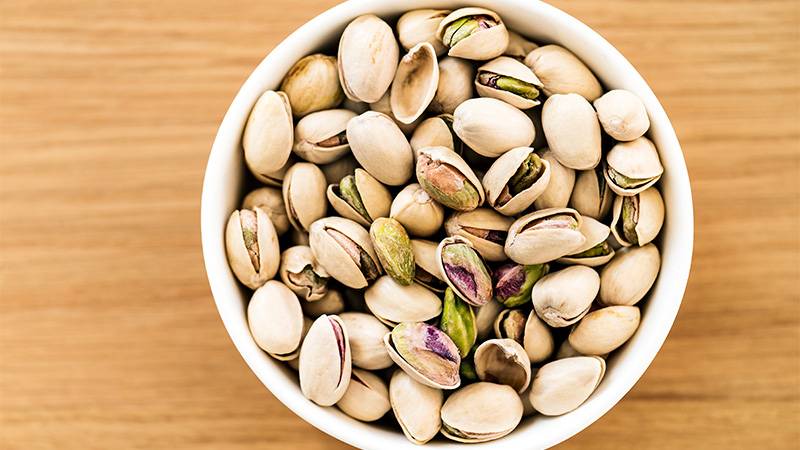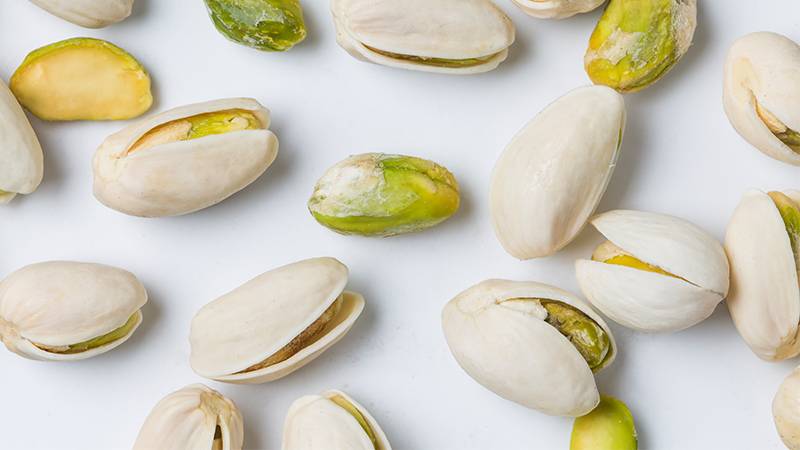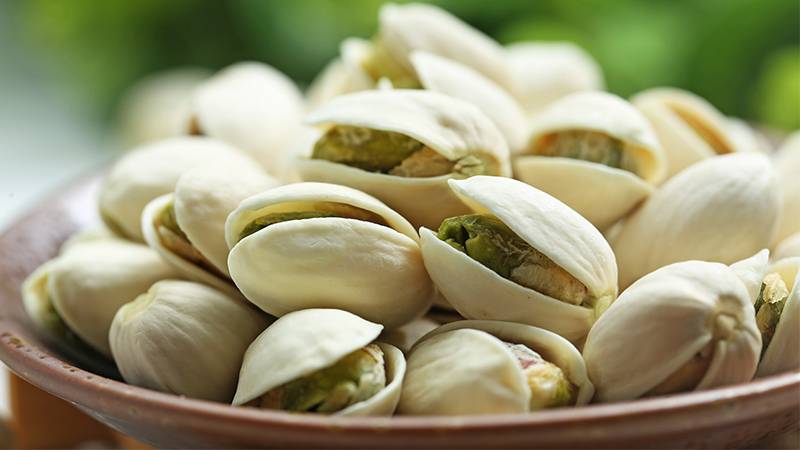Pistachios. A delightful treat many of us savor. But once we’ve enjoyed the nut, we’re left with that hard, seemingly imperishable shell. It makes one wonder: are pistachio shells compostable?
I’ve delved deep into the world of composting over the past two decades, and I understand the importance of ensuring we only add truly compostable items to our bins. So, let’s embark on a journey to uncover the truth about these stubborn shells, their potential for our gardens, and the bigger picture of their role in sustainable living.
Are Pistachio Shells Compostable?
In the vast realm of composting, where organic matter transforms into nutrient-rich gold for our gardens, the question arises: where do pistachio shells fit?
In short, yes, pistachio shells are compostable.
However, they’re not as quick to break down as some other kitchen waste. Their hard and durable nature means they take longer to decompose compared to softer organic materials.
But with patience and the right composting conditions, they can be a valuable addition to your apartment compost bin, contributing to sustainable gardening and helping reduce waste. Think of them as the slow-burning embers in the world of composting—steadily releasing their goodness.
Are Pistachio Shells Biodegradable?

When it comes to the broader concept of biodegradability, many often conflate it with compostability. To be clear, being biodegradable means an item can break down naturally over time, returning to the environment without leaving harmful residues.
Pistachio shells, in this sense, are indeed biodegradable.
Their organic nature ensures that, over time, they’ll disintegrate and merge back with the soil. But remember, “biodegradable” doesn’t always equate to “quickly decomposable.” While they might not vanish from your garden mulch overnight, these shells will eventually reduce and recycle themselves in our eco-system, promoting natural waste reduction.
Are Pistachio Shells Good for Garden Soil?
Pistachio shells, with their tough exterior, might seem like an unlikely candidate for garden soil enrichment. But you might be surprised! When incorporated into garden soil, they offer several benefits.
First, they act as a natural mulch, retaining soil moisture and reducing weed growth. Over time, as they slowly decompose, they release essential nutrients, further promoting soil health.
Moreover, their coarse texture helps in soil aeration, essential for root health and water drainage. This can be particularly beneficial in regions with clayey soil, prone to water-logging.
However, there are some cautions to note. Given their slow decomposition rate, if you’re aiming for a tidy garden aesthetic, pistachio shells might not be your top pick.
They can remain visible for a while. Additionally, their hard nature means they might not be suitable for all plants, especially those with delicate root systems. Still, when used thoughtfully, pistachio shells can be a sustainable gardening asset, turning snack waste into garden gold.
How Long Does It Take for Pistachio Shells to Decompose?
Pistachio shells, with their sturdy structure, certainly test our patience when it comes to decomposition. Their rate of breakdown can vary depending on several factors, including composting conditions, weather, and moisture levels, but generally, it takes 1-3 years for them to decompose.
Let’s take a comparative look:
| COMPOST ITEM | APPROXIMATE DECOMPOSITION TIME |
|---|---|
| Banana peels | 2-4 weeks |
| Orange peels | 1-2 months |
| Eggshells | 3-6 months |
| Pistachio shells | 1-3 years |
| Hardwood twigs | 2-3 years |
As evident, while softer organic materials like banana peels decompose rapidly, pistachio shells take their time. This slow decomposition aligns with their biodegradable nature, gradually enriching the soil.
Therefore, when adding them to your compost bin, ensure a mix of quick and slow-decomposing items to balance out the nutrient release and maintain soil health over time.
Tips and Considerations for Composting Pistachio Shells
While pistachio shells’ sturdy nature is a testament to their resilience, it doesn’t mean they can’t be made compost-ready. Here’s how to get the most out of these shells in sustainable gardening:
Crush the Shells
Before adding them to the compost pile, give them a good crush. This increases their surface area, making them more accessible to decomposing organisms.
Balance the Compost Ingredients
Ensure your compost has a mix of green (nitrogen-rich) and brown (carbon-rich) materials. While pistachio shells fall under the brown category, pairing them with green waste like vegetable scraps can expedite their decomposition.
Moisture is Key
Like all compost materials, pistachio shells need moisture. But don’t overdo it. Ensure your compost remains damp, not waterlogged.
Turn the Pile
Regularly turning your compost pile encourages air circulation, aiding the decomposition process.
Remember, patience is your ally when composting pistachio shells. Their slow breakdown might test your waiting game, but the enriched soil health and reduced waste make the wait worthwhile.
How to Properly Compost Pistachio Shells

Composting pistachio shells can seem a tad daunting given their hardy nature, but with the right steps, they can become a valuable addition to your compost bin, supporting both sustainable gardening and eco-friendly practices. Here’s how to do it right:
- Pre-treatment: Start by crushing the shells slightly. This not only speeds up the composting process but also makes it easier for beneficial microorganisms to do their job.
- Layering: As a brown (carbon-rich) material, pistachio shells should be layered with green (nitrogen-rich) waste, such as grass clippings or vegetable scraps. This balance ensures optimal decomposition.
- Maintain Moisture: Keeping the compost pile moist (but not soggy) is crucial. Water occasionally if the pile becomes too dry.
- Air it Out: Every few weeks, turn the pile to introduce air, which helps in breaking down the organic matter.
- Patience Pays: Given their slow decomposition rate, regularly check and don’t be disheartened if the shells are still noticeable. Over time, they will contribute to your garden’s nutrient-rich compost, making every snack-turned-waste count!
7 Creative Uses for Pistachio Shells Beyond Composting

Composting isn’t the only way to get creative with pistachio shells. Their durability, coupled with a unique aesthetic appeal, opens a world of possibilities for sustainable living and inventive home projects. Here are seven innovative ways to turn those shells from mere snack remnants into valuable assets.
Natural Mulch
Spread crushed pistachio shells around the base of your plants. They can help in retaining moisture, deterring weeds, and maintaining soil temperature. The added bonus? They give your garden a distinct and decorative look!
Crafty Creations
With a splash of paint or some glue, pistachio shells can be transformed into beautiful art projects. Think of them as nature’s mosaic tiles; they’re perfect for creating intricate designs on frames, vases, or even homemade jewelry.
Drainage Enhancer
If you’re potting a plant, consider placing some crushed shells at the bottom of the pot. They’ll improve drainage and prevent soil from escaping through the drainage holes.
Homemade Candles
For a rustic touch, incorporate pistachio shells into your DIY candles. As the wax melts, the shells will float, offering a delightful aesthetic touch.
Abrasive Cleaner
Pistachio shells, when crushed into finer particles, can act as a natural abrasive. Mix them with a bit of soapy water to create a paste, and you have an eco-friendly scrub for those tough-to-clean spots in your kitchen.
Fire Starter
Due to their compact and hardy nature, pistachio shells can be used as a fire starter for campfires or fireplaces. They catch fire relatively quickly and burn steadily.
Decorative Paths
Considering a garden path? Crushed pistachio shells can be used as an eco-friendly alternative to traditional gravel. They provide a unique, rustic look, all while recycling your snack waste.
From sustainable gardening to crafty ventures, pistachio shells offer a multitude of uses, proving that with a little imagination, what seems like waste can be transformed into something truly wonderful. So, next time you enjoy a handful of these tasty nuts, think twice before discarding their outer armor. There’s potential waiting to be unleashed!
Frequently Asked Questions (FAQ)
Old pistachio shells have multiple uses: they can be composted, used as natural mulch, incorporated into DIY art projects, utilized as pot drainage enhancers, or even transformed into eco-friendly scrubs for cleaning.
The best way to dispose of pistachio shells is to compost them. Although they decompose slowly, with patience, they enrich the compost mix. Alternatively, they can be repurposed for craft projects or used as a natural mulch in gardens.
Yes, it’s okay to throw pistachio shells as they are biodegradable. However, considering their potential benefits, it’s environmentally friendlier to compost or repurpose them instead of sending them to landfills.
Compost worms prefer softer organic matter and might not directly consume hard pistachio shells. Over time, as the shells begin to break down, worms can feed on the microbial activity around them, but they won’t be a primary food source.
To crush pistachio shells for compost, place them in a cloth bag and use a hammer or mallet to gently break them into smaller pieces. Alternatively, using a rolling pin or the flat base of a heavy pan can work effectively. Crushing increases their surface area, aiding faster decomposition.
Conclusion
After two decades in the composting realm, I’ve seen many trends come and go, but the question, “are pistachio shells compostable?” remains relevant. Yes, they are, albeit with patience and the right techniques.
Their biodegradability, combined with their versatility in garden and household projects, makes them a surprisingly valuable byproduct of our snacking. These shells exemplify the beauty of nature: even in the most unassuming items, there’s potential for renewal and sustainability.
As you munch on your next handful of pistachios, I urge you to rethink discarding those shells. Instead, embrace them as a small yet significant step towards a greener world.



